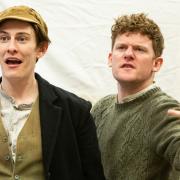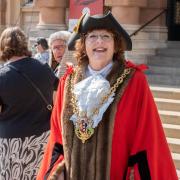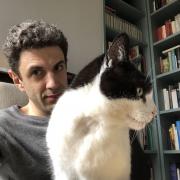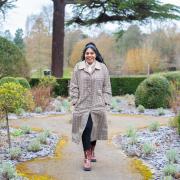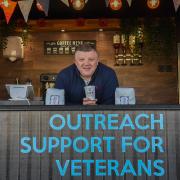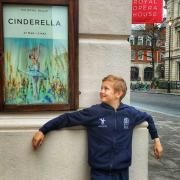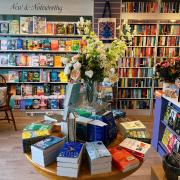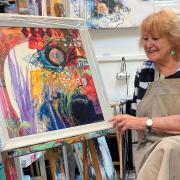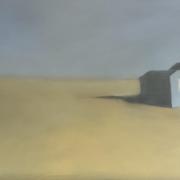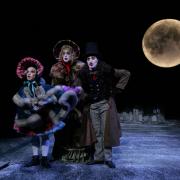Work by the Bawdsey Radar Trust reveals the huge role women played in securing the nation’s wartime defences | Words: Catherine Larner

Pilots flying dangerous missions throughout the Battle of Britain have long been celebrated. But the contribution of radar operators in the Women’s Auxiliary Air Force (WAAF) at RAF stations on the ground, identifying and plotting locations of enemy aircraft, has often been under-recognised.
A new addition to the exhibition at the Transmitter Block at Bawdsey seeks to redress that imbalance.
Called Who wore the trousers? the new display tells the stories of some of the women who worked and trained in radar at Bawdsey throughout the Second World War, supporting the men in the skies.
An unexpected outcome of research into the roles of women in radar was the discovery of Dr Mary Taylor, a brilliant mathematician and theoretical physicist who worked with Robert Watson Watt and Arnold Wilkins in developing radar in Berkshire in 1935.

“She it was who had done most of the calculations for Watson Watt and Wilkins,” states a document in the National Radar Archive. “When she married, under civil service rules, she had to resign her post, losing the service of one of its most outstanding mathematicians.”
Thousands of women were employed during the war to run the radar stations around the UK coast.
Watson Watt declared them best equipped for the role due to their “alertness, keenness of perception, delicacy of touch, and. . . conscientiousness to a degree unobtainable in the men who were likely to be available for [radar] operator duties”.
“It was nice to know there was something we could do better than the men,” says Jean Williams, a radar instructor at Bawdsey during the Second World War, whose vivid memories are among those captured as oral histories by the Bawdsey Radar Trust.

“I was billeted in Bawdsey Manor,” says Hilda Pearson, who chose to work in radar when she joined up “because it sounded most interesting.”
The work of the radar operator was as secret as that of the code-breakers at Bletchley Park. Each operator had a revolver and instructions to shoot their screens should the station be breached.
A lead tank, filled with acid, was installed so that all sensitive material could be destroyed if necessary.
“Everything had to be recorded,” says Peggy Haynes in another account. “I was quite hoarse by the time I’d finished because you had to relay the plots to the filter room.

“I can’t say that we were ever afraid. If you were plotting you were too busy and afterwards you were so tired that you just went to sleep.”
Mary Wain
Mary Wain was chair of Bawdsey Radar Trust for 15 years. She guided it from inception through to gaining the Heritage Lottery funding that enabled full conservation of the Transmitter Block and the installation of an exhibition about the history of radar.
She has taken great delight in the role. “I have spent 15 years working on something of enormous personal significance as well as historical and scientific importance. I have been a very fortunate person.”

Mary was born at Bawdsey Quay and lived there for the first six years of her life, travelling back and forth across the river by ferry to school in Felixstowe.
Her parents met at the radar station during the war and, although she has a photograph of them both in uniform, she has struggled to find any information about the contribution they made. Many people never told their families about their work at Bawdsey.
“My mother was a WAAF and, I assume, a radar operator but, if I’m honest, I have no idea.
“And my father never talked about what happened at RAF Bawdsey, except for Shingle Street and the stories about the fire on the beach. He was on duty that night and he was absolutely adamant that if anything had happened he would have known.”

Mary returned to Suffolk years later with her husband, Peter, to raise their own family. They lived in Felixstowe and, when Mary started teaching maths at the Alexanders School in Bawdsey Manor, the trips in the ferry started again.
“I loved it,” she says. “Still do. If ever I feel a bit low, I just have to get on that boat. It only takes two minutes, but something happens!”
The old Transmitter Block of Bawdsey Radar Station was opened to the public in 2002 as part of a council heritage project. Seeing how much interest it generated, Mary and a small group of volunteers sought to create a permanent exhibition.
“We found dreadfully cold places to have meetings,” she says. “But I got very involved, and it’s interesting to find out now why women’s memories were overlooked.”

Bawdsey Radar Trust was named Suffolk Small Museum of the Year 2019.
Joyce Green
She’d done well in her studies and was set for a career in the Civil Service but, after four years of sitting in an office, filing and making the tea, Joyce Green decided she wanted more.
“The job was very, very boring,” she says. “I was astounded. I thought I’ve got all these good results yet I’m just putting things in alphabetical order.

“I told my parents I was going to volunteer for the WRENs. I wanted to do my bit for my country. My mother didn’t think much of the idea but it changed my life completely.”
Joyce joined up in 1943 and went through various evaluation tests and courses before becoming a radar mechanic, posted to Lee on Solent, servicing equipment on planes.
“We had a Swordfish platoon and some Walrus helicopters,” she says. “The Swordfish was very slow. I was taken up once. You’d look over the side and the seagulls would be flying past us.”
She remembers testing one plane which had a faulty transmitter. “I opened it up and it was full of packets of cigarettes.”

Joyce enjoyed her role, living and working in Nissen huts on the base, wearing trousers and being considered equal with the men. “Right through the war we were never frightened,” she says.
But in preparations for D-Day, the women were moved to a safer location at Warrington, and worked on static radar.
“It was so different in the north,” Joyce says. “There was so much food and you could buy lovely clothes. People were very friendly. I remember seeing grapefruits in a greengrocers and bought six to take back with me to London.”
After the war Joyce returned to the civil service but found it “a bit dull” so applied to be a lab assistant with Standard Telephones and Cables, working first in maintenance and then with the engineers – which is how she met her husband.
They moved to Felixstowe 30 years ago, and learned then of the role of Bawdsey Manor in the development of radar.
“We probably didn’t realise how important the work was at the time,” she says. “It was just what we did.”
Visit them and find out more online at bawdseyradar.org.uk




